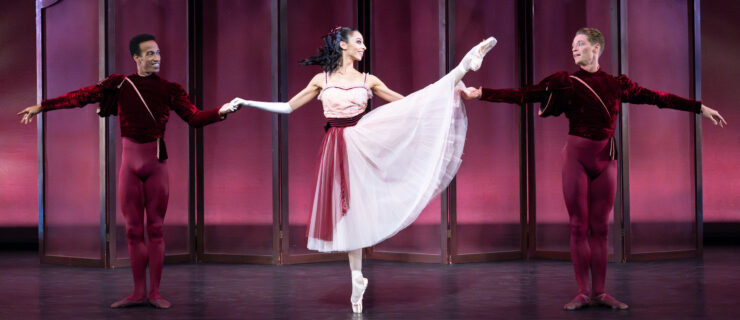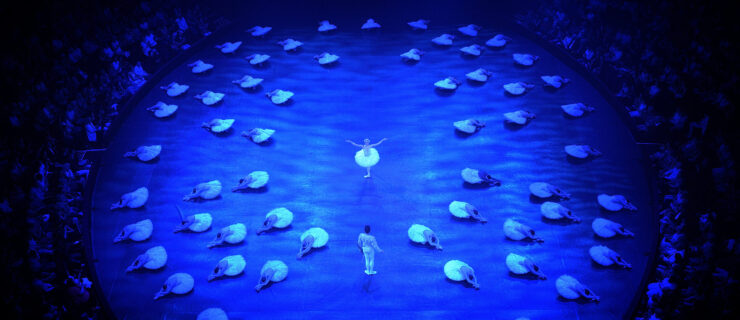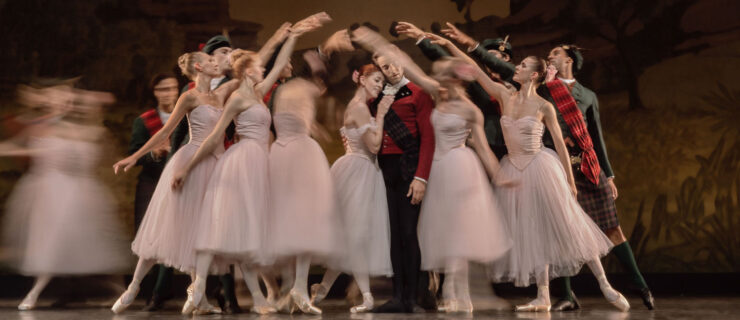Ask Amy: Stick to It
Have a question?
Click here to send it to Suzanne Farrell Ballet dancer Amy Brandt.
My dance studio has very slippery floors. What are some ways to keep my pointe shoes from slipping (other than using rosin)? —Emma
A slippery floor is every ballet dancer’s nightmare, especially when rosin isn’t an option. One alternative is to step on a wet paper towel or sponge. Dampening the bottoms and tips of your pointe shoes will help prevent slips. (However, too much water will warp your shoes, so use sparingly.) The effect is only temporary, so ask if you can keep a wet sponge or paper towel in the corner of the studio. Some dancers use Coke instead of water, but again, ask your instructors first—they may not want sticky soda residue on their floors. Scraping the soles of your shoes with a rasp or cheese grater or scoring them with a box cutter also helps them better grip the floor.
Some dancers darn the tips of their pointe shoes with thick thread to improve traction. Darning can be time-consuming and a little tricky, so if you’ve never done it before, practice on some old shoes first. Freed of London offers step-by-step instructions on their website.
Softer shoes slip less on slick surfaces, so always keep a pair handy. That way, you can break in newer shoes during barre and switch to softer ones for center, leaving your face-plant fears behind.
Help! My hair keeps breaking and falling out from always being in a bun. —Makenna
It sounds like you have a case of traction alopecia, or hair loss caused by routinely pulling the hair back into a tight hairstyle. Often called “ballerina baldness” because of its frequency among bunheads, traction alopecia can permanently scar the hair follicles and cause irreversible bald spots if it’s not addressed. Scary, I know. Luckily, there are simple ways to help solve the problem.
First, switch to a looser hairstyle if possible to give your scalp some relief. For instance, if you usually wear a super-tight bun, try a softer low chignon. Change your part frequently, too. When you’re not dancing, let your hair down so it can flow freely. While gels and hairsprays are necessary to get that slicked-back look for performances, avoid using them for class—they add weight and can dry out your hair, increasing the risk of breakage.
Avoid harsh chemical treatments and detergent shampoos, and gently detangle with a wide-tooth comb, working from ends to roots to avoid tugging on the scalp. The longer your hair, the heavier the bun, so see if you can part with a few inches. Also, consider cutting bangs—that’s what I did when my hairline started creeping back. It can take several months to see improvement, so be patient, and consult a dermatoglogist if the problem persists. In the meantime, have fun with all your new hairstyles!
I’m going to my first competition next month, and every time I think about performing in front of judges my stomach starts doing somersaults! How can I get a handle on these nerves? —Rosalin
I never competed growing up, so I asked Boston Ballet soloist Whitney Jensen—who won medals at Youth America Grand Prix and at international ballet competitions in Varna, Seoul and Orlando—about how she dealt with pre-performance anxiety. “I used to pretend that they were taking a break in the competition and that I was the guest artist,” she says. “That helped me get over the fact that I was being judged and gave me a boost of confidence.”
It also helps to stay focused on your own performance, rather than getting distracted by the other competitors. “That’s not to say that you shouldn’t be supportive,” says Jensen. “But if I felt nervous, I wouldn’t watch the other dancers before I performed. I would stay in my own zone.”
Of course, it’s imperative that you arrive as well-rehearsed as possible. Review any last-minute corrections, but instead of imagining what could go wrong or what the judges will think, visualize yourself giving a flawless performance. Once you’re up, trust in your months of preparation and let go. For more advice, read “Tips From First Place.”





